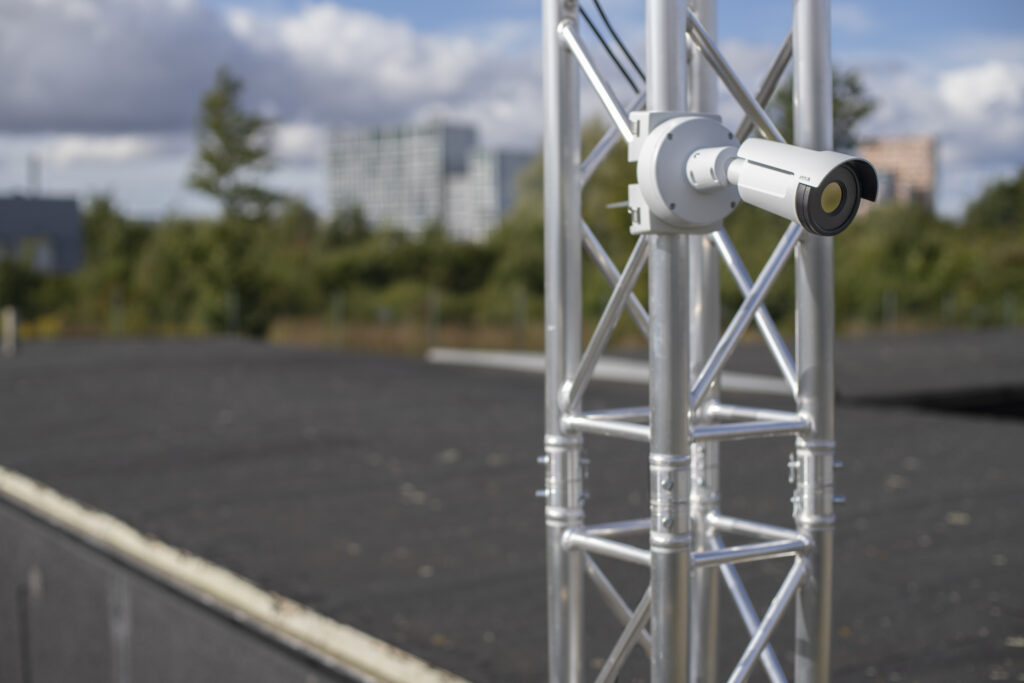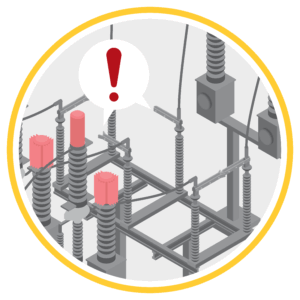By Jason Chiu

Axis Q196-LTE Overlooking Power Station
Supervisory Control and Data Acquisition (SCADA) systems have been the workhorses of energy infrastructure for decade. They quietly collect data, monitor equipment, and help automate everything from grid operations to substation controls. But for all their strengths, SCADA systems have a critical blindspot: they can’t see what’s actually happening on the ground.
Without eyes on the ground, SCADA operators often rely on indirect indicators to infer what’s happening on the field. A drop in pressure might signal a leak, or a sudden temperature spike might point to overheating equipment. But without visual confirmation, teams are left guessing – and guessing, in high stakes environments, introduces risk.
This is where surveillance technologies are changing the game. By integrating real-time video, thermal imaging, and edge-based analytics into SCADA environments, operators can move from data collection to real-time situational awareness. It’s no longer just about knowing that something has gone wrong – it’s about seeing it, understanding it, and responding faster and smarter.
Bridging the Visibility Gap
SCADA is great at collecting numbers. But those numbers don’t always tell the full story. A temperature spike might mean overheating – or it come something as simple as sunlight hitting a sensor. Without eyes on the scene, it’s hard to tell.
That’s where integrated surveillance comes in. High-resolution cameras and thermal sensors give operators the ability to visually confirm issues as they happen. They allow operators to visually verify anomalies, confirm equipment conditions, and assess safety risks without deploying a technician on-site. For example, a thermal camera can detect hotspots in a transformer before it fails, while a pan-tilt-zoom (PTZ) camera can help security teams remotely inspect a substation after hours. Combined, a bi-spectral PTZ camera becomes a multi-purpose tool, capable of general surveillance as well as periodic proactive monitoring of on-site equipment.

Critical Infrastructure Electrical Substation Visual Verification
This ability to “see” what SCADA “senses” fundamentally changes the way operators interact with their infrastructure. It creates a new feedback loop – one where automated alerts can be instantly validated with visual evidence, and human decisions are grounded in real-time information. Additionally, intelligent equipment can point to potential problems before they arise, allowing for preventive maintenance to keep equipment running and avoiding a costly failure, shutdown, and repair/replacement cycle.
Take remote substations, for example. If an alarm goes off in the middle of the night, surveillance cameras can help verify whether it’s an equipment fault, a wildlife trigger, or a real security threat. This kind of visibility turns guesswork into clear action.
Further, thermometric cameras which can not only detect heat but other related metrics such as rate of rise, average temperature, and zone temperature can further be deployed to provide monitoring of the substation equipment, which further eliminates guesswork and the deployment of maintenance personnel.

Equipment Thermal Scanner
Smarter Tech at the Edge
One of the most powerful developments in surveillance is the shift toward edge-based analytics. Cameras are no longer passive recording devices – many now have built-in analytics that process information right at the edge – on the camera itself.
This matters in energy operations, where vast physical distances and limited on-site staff make manual monitoring inefficient. With edge analytics, a camera can detect movement, recognize patterns, spot smoke or heat signatures, and trigger alerts automatically and instantly without the need to transmit data back to a head end or operations centre. No need to wait for human eyes to notice something’s wrong – these smart cameras act like an extra set of eyes that never blink.
By integrating this intelligence into SCADA workflows, alerts can be more targeted and actionable. Instead of flagging a generic system anomaly, the SCADA dashboard might show a thumbnail image of an intruder entering a restricted area, along with a timestamp and GPS coordinates. That’s not just an alarm – it’s situational awareness.
Operational Gains Across the Board
The value of surveillance integration extends far beyond emergency response. In fact, some of the biggest returns come from everyday operational efficiency and maintenance planning. Visual data enables better diagnostics. If a wind turbine is underperforming, video footage might show ice buildup on the blades. If an asset generates repeated faults, a visual timeline can help identify contributing environmental factors, like vegetation growth or wildlife interference.
It also saves time and money. Instead of rolling a truck every time a sensor acts up, operators can quickly check the live feed and decide whether a site visit is actually necessary. Fewer truck rolls mean lower costs, less downtime, and improve safety for field staff.
In highly regulated environments, video documentation can also support compliance and auditing. Time-stamped footage of routine inspections or maintenance activities adds a verifiable record to support claims and reports.
Better Protection for Critical Sites
Energy infrastructure is more than just equipment – it’s a national security asset. Substations, solar fields, hydro facilities, and other remote installations are often vulnerable to vandalism, theft, or even coordinated attacks.
Surveillance strengthens physical security without adding a massive human footprint. High-resolution day/night cameras, thermal sensors, and intelligent analytics work together to monitor perimeters, detect intrusions, and escalate threats in real time. Combined with SCADA alerts, these tools ensure that physical security is fully integrated into operational awareness.
When surveillance is integrated with SCADA, data gathered becomes part of a larger, smarter system. If a security alert comes in, the system can cross-reference it with nearby sensor data, lock down access points, or notify the right team in seconds. It’s all about connect the dots faster, and that’s only possible when SCADA and surveillance work together.
Navigating Integration Challenges
While the benefits are clear, of course, adding surveillance to SCADA isn’t just plug-and play.
Technical considerations like interoperability, cybersecurity, and data management must be carefully addressed.
Interoperability is critical. Surveillance systems must communicate seamlessly with SCADA platforms, often via protocols like MQTT, ONVIF, Modbus, or OPC UA. Open-architecture cameras and VMS platforms ensure compatibility across diverse ecosystems and allow operators to scale deployments over time. Additionally, the ability to add features to a camera such as VPN tunneling, protocol conversion, and command/control of other systems via an application platform is key in ensuring that the camera can provide full usability and interoperability in its ecosystem.
Cybersecurity is another key concern. Surveillance endpoints are part of the broader operational technology (OT) network and must be hardened against threats. This includes encrypted communications, secure firmware updates, and strict user access controls – especially as video feeds are increasingly accessed remotely.
Data management also requires thoughtful planning. High-resolution video generates significant data, and organizations must balance retention requirements with bandwidth and storage constraints. Edge recording and intelligent compression can help optimize this balance while ensuring critical footage is preserved.
A New Kind of SCADA
The future of SCADA is visual, intelligent, and connected. Surveillance isn’t replacing data – it’s adding the missing piece. With the right integration, energy operators can go from simply knowing that something happened to understanding why it happened, where, and what to do about it – all in real time.
In high-pressure environments where downtime is expensive and safety is critical, that kind of insight makes all the difference. By bridging the gap between raw data and real-world context, energy organizations move from reactive troubleshooting to proactive decision-making. They can spot problems before they escalate, respond faster when they do, and operate with a level of confidence that only comes from seeing the full picture. For utilities, renewable energy providers, and critical infrastructure operators, this isn’t just a technical upgrade – it’s a strategic advantage.
BIO
Jason Chiu is the Professional Services Group Manager with Axis Canada. He has a background in IT and networking and has spent over 18 years in the security industry, from being an integrator, consultant and manufacturer. Jason is an ASIS board certified Physical Security Professional (PSP), is trained in Critical Infrastructure Protection (CIP), Crime Prevention Through Environmental Design (CPTED Levels 1 & 2), and (ISC)2 Certified in Cybersecurity.
Share This:




 CDN NEWS |
CDN NEWS |  US NEWS
US NEWS 






















